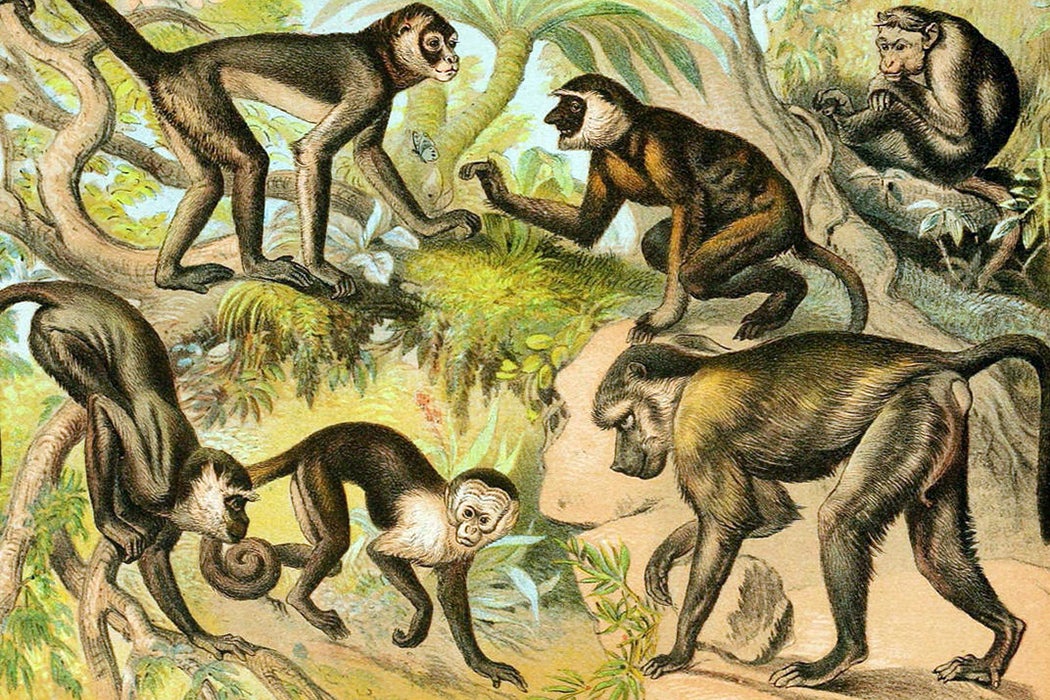Are we men or monkeys? That question has been alive since long before the theory of evolution was a thing—and the real and supposed resemblances between humans and non-human primates helped shape American conversations about race and society. Brett Mizelle looked at popular portrayals of monkeys in the Early American republic—and found a robust conversation about how men might resemble their non-human relatives.
Mizelle focuses on how the primates were represented in traveling shows and what that revealed about human concerns. Monkeys weren’t just amusing sights, he posits—they were “sights” in which humans tried to work out their concerns about the social order.
In the late eighteenth century, monkeys were common in the traveling shows and street displays of the early republic, and often they were advertised on the basis of how similar they looked to humans. Exhibitors used the animals’ natural behaviors, like rocking their babies, and exploited their similarities to human behavior. Unlike caged animals, the monkeys in menageries often looked at or directly interacted with humans, and they did amazing things like dances, card tricks, and pantomimes. Exhibitors assigned gender roles to the monkeys and, when they failed to act human, capitalized on their behavior to poke fun at human society.
Monkeys were also portrayed in popular literature which showed their “unrestrained animality.” These monkeys destroyed the homes of their supposed masters; they imitated humans and got into scrapes. Authors often used monkey to demonstrate religious points about human vanity and the dangers of stepping too far out of the social order. They were also used as “rhetorical stand-ins” for African-American people. Given that black people were treated and perceived as subhuman by most white Americans at the time, it is not surprising that they were closely identified with monkeys imitating humans.
Often, exhibitors referred to monkeys not as primates, but as creatures that resembled hairy human beings. Portrayed in advertisements with human accoutrements like walking sticks and clothing, these monkeys were used as stand-ins for real people in a complex reckoning of early American social rankings. Though Darwin had not yet published his On the Origin of Species, spectators and exhibitors tried to categorize the primates in a kind of evolutionary chain in which white men were first, white women second, black men and women third, and primates fourth. The more hair, the less civilized the subject.
This, in turn, was used to justify slavery, notes Mizelle, and black people were depicted as primates just as often as primates were depicted as black people. And even as white people justified their subjugation of African-Americans by portraying them as animals, they used their supposed identification with animals as an excuse to discourage and even criminalize sexual relations between races. It went the other way, too. Many texts portrayed black women having sexual relations with primates; proof of their supposed animalism and inferiority.
Primates were useful canvases for these forays into racial and social imagination. Mizelle calls them “creatures of the threshold”—animals that could both challenge and reinforce social norms. Authors and exhibitors exaggerated monkeys’ qualities to sell books and tickets. But in doing so, they helped create stereotypes that lasted long after the show was over.







